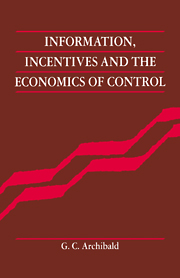9 - Non-convexity and optimal product choice
Published online by Cambridge University Press: 19 October 2009
Summary
Product choice
It is my purpose here to suggest that increasingness, with the attendant impossibility of divorcing considerations of efficiency and of equity, is a much more common phenomenon than is sometimes thought. I start with what may appear to be a digression.
How many models of automobile should be produced? To maximize welfare under some resource constraint, how many brands of soap powder or styles of shirt are required? How well, indeed, are we equipped to answer such questions? The honest answer to the last question must, I think, be “poorly.” We may guess that planned economics have done a bad job of product selection. We may guess that capitalist economies have done better, although the record is much obscured by non-competitive structures and practices. We have no serious criteria to determine what would be the optimal product set in an ideal economy, whether planned or not. Yet distinct and differentiated products clearly claim a non-trivial proportion of economic activity, at least in more affluent economies.
There seem to be two obstacles to our progress. The first is easily overcome, and has been, by adopting a convenient theoretical approach. The second, as we shall see, is the impossibility of disentangling efficiency and equity in dealing with the problem.
The characteristics approach
A full-dress “justification” of the characteristics approach is, at this date, surely otiose; and, indeed, the literature is now too ample to be cited in full.
- Type
- Chapter
- Information
- Information, Incentives and the Economics of Control , pp. 95 - 106Publisher: Cambridge University PressPrint publication year: 1992



